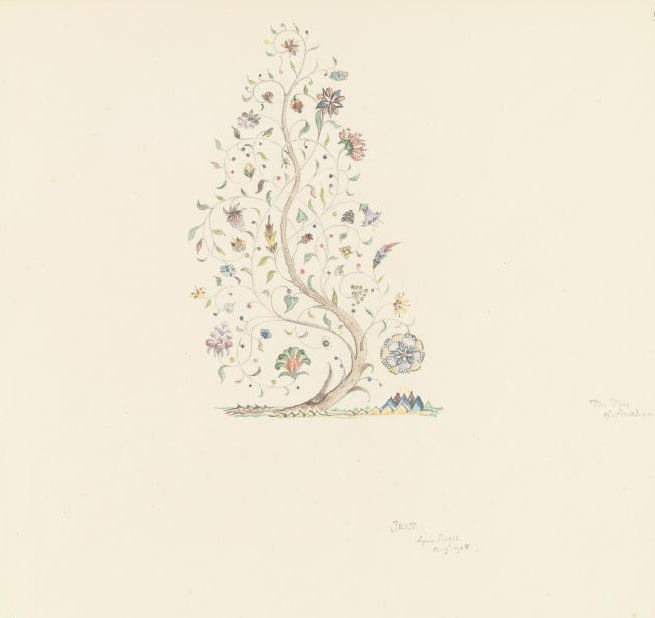🍃 Leaf by Niggle, Allegory by Tolkien
Exploring one of Tolkien's lesser-known stories
‘There was once a little man called Niggle, who had a long journey to make. He did not want to go, indeed the whole idea was distasteful to him; but he could not get out of it. He knew he would have to start some time, but he did not hurry with his preparations’.
J.R.R. Tolkien, “Leaf by Niggle”
What in our lives and our world is truly of value? How can we best spend our time on this earth? What is the real impact of a single act of kindness or creativity? And does heaven exist? If it does, what might it be like?
These are some of the questions that J.R.R. Tolkien addresses in his short story “Leaf by Niggle” (which you can find collected in Tales from the Perilous Realm). Using story and allegory, he illustrates the true value and impact of the creative process, the somewhat surprising connections that we share with our neighbors, and his beliefs about the journey of life, death, and what follows afterwards.
Tolkien and Allegory
Unlike his good friend and fellow Inkling C.S. Lewis, Tolkien was not a fan of allegory generally. Tolkien’s opinion on allegory was that it bordered on insulting to the reader for an author to force them to read their work in such a way that only a single interpretation was possible. Instead, he preferred a story so full of authenticity and correspondence to real life that the reader would find it easy to glean applications based on their own experiences.
In the foreword of the second edition of The Lord of the Rings, Tolkien commented
I cordially dislike allegory in all its manifestations, and always have done so since I grew old and wary enough to detect its presence. I much prefer history, true or feigned, with its varied applicability to the thought and experience of readers. I think that many confuse 'applicability' with 'allegory'; but the one resides in the freedom of the reader, and the other in the purposed domination of the author.
But his general dislike for heavy-handed allegory did not stop him from writing his own better suited to his tastes.
He writes in Letter 131 on this nuanced view, explaining again his distaste for certain types of allegory but then describing what a ‘good’ allegory would look like:
I dislike Allegory - the conscious and intentional allegory - yet any attempt to explain the purport of myth or fairytale must use allegorical language. (And of course, the more ‘life’ a story has the more readily will it be susceptible of allegorical interpretations: while the better a deliberate allegory is made the more nearly will it be acceptable just as a story.)
If an allegory must be made, Tolkien argues, better it arises naturally from a story that succeeds on a surface level and does not depend on a metaphorical interpretation to work. Interestingly, Tolkien also suggests that the better a story is, the more correlations it will have with real life, which will drive allegorical interpretations organically.
He fleshes out this idea in an earlier letter to his publisher (Letter 109) where he expounds on the relationship between story and allegory:
Allegory and Story converge, meeting somewhere in Truth. So that the only perfectly consistent allegory is a real life; and the only fully intelligible story is an allegory. And one finds, even in imperfect human ‘literature’, that the better and more consistent an allegory is the more easily can it be read ‘just as a story’; and the better and more closely woven a story is the more easily can those so minded find allegory in it. But the two start out from opposite ends. You can make the Ring into an allegory of our own time, if you like: an allegory of the inevitable fate that waits for all attempts to defeat evil power by power. But that is only because all power magical or mechanical does always so work. You cannot write a story about an apparently simple magic ring without that bursting in, if you really take the rings seriously, and make things happen that would happen, if such a thing existed.
Leaf by Niggle, Allegory by Tolkien
Tolkien’s attempt at a better deliberate allegory is “Leaf by Niggle,”1 a short story about a painter named Niggle who spends his life attempting to finish an immense painting of a colossal tree.
In “Leaf by Niggle” we find Tolkien channeling his experience writing The Lord of the Rings, illustrating his concepts about the creative process, and sharing his beliefs about heaven—portrayed as only a creative and artist such as himself could imagine—in an allegorical tale.
Allegory and Story converge, meeting somewhere in Truth.
Does Tolkien’s allegory meet his own standards of success? Or does it fall victim to the inelegant and heavy-handed style of story-telling Tolkien himself aimed to avoid?
To join hundreds of members of the Jokien with Tolkien Extended Edition in reading the rest of this full essay (plus over 50 posts in the archives of Extended Edition content), upgrade your subscription today for just $5 a month or $40 a year!
OR for the same price of a monthly membership ($5), get this full essay plus nine more Extended Edition exclusive essays by purchasing my Lore of the Rings Vol. 1 e-book:
Oh, and paid subscribers: please vote in the poll at the very end of the post!
Keep reading with a 7-day free trial
Subscribe to Jokien with Tolkien to keep reading this post and get 7 days of free access to the full post archives.




